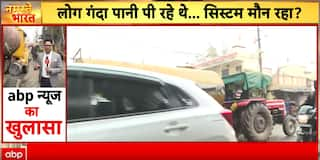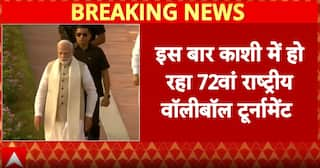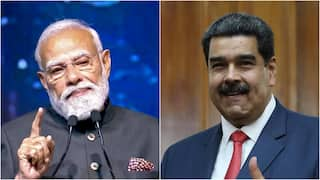Small Savings Vs Bank Deposits. Banks Continue To Remain Preferred Choice For Customers: Report
Small saving deposits at Rs 9.9 lakh crore in this February are only a small fraction of total SCB deposits which stand at Rs 170.2 lakh crore, according to a report

The government recently announced a hike in interest rates for small savings schemes after keeping the rates stagnant for nearly two years. In a Bank of Baroda report, economist Aditi Gupta said of the total 12 schemes, interest rates on five schemes were raised in the range of 10-30 bps. On the other hand, while banks have increased term deposit rates to some extent, savings deposit rate continues to remain at a low of 2.7 per cent. Even the term deposit rate of 1 year maturity fetches a lower rate of interest than the corresponding small saving instruments.
Small savings components
Small savings comprise three main components: deposits, saving certificates, and public provident fund (PPF). Deposits account for a majority share (69.4 per cent) of the total small savings. It must be noted that while small savings grew by a CAGR of 12.2 per cent in the last 5 years, the CAGR for deposits has been higher at 13.4 per cent in the same period. Within deposits, post office time deposits (17.4 per cent) and post office savings deposits (16.4 per cent) have a significant share.
Savings certificates with a share of 23 per cent in total small savings, also remain a major player in this segment. CAGR growth in this segment was at 9.7 per cent in the last 5 years. PPF with a share of just 7.6 per cent, remains the least preferred amongst investors. This may be due to a long lock-in period of 15 years under this scheme. Growth of PPF deposits too has remained lackluster at just 9.1 per cent.
There are several savings certificates available for an investor to choose from, which include National Savings Certificates (NSC), Kisan Vikas Patra (KVP), and other certificates. Of these, NSC-VIII issue and KVP (2014) have remained the preferred choice of investors. In fact, on a CAGR basis, only deposits under these schemes have shown an increase in the past five years.
According to the report, small saving deposits at Rs 9.9 lakh crore in this February are only a small fraction of total SCB deposits which stand at Rs 170.2 lakh crore. In terms of incremental deposits as well, while deposits by SCB’s have increased by Rs 55.4 lakh crores over the last five years, small saving deposits have only increased by Rs 4.6 lakh crore.
Domination of SCBs
In terms of savings deposits, SCBs have dominated the market with Rs 56.8 lakh crore of deposits in FY22. In comparison, post office savings deposits under the small savings scheme have remained very low at just Rs 2.3 lakh crore. Also in terms of deposit accretion, while savings deposit of SCBs have risen by Rs 20.3 lakh crore in the last five years, deposit accretion by post office deposits has been much lower at Rs 1.2 lakh crore only. However, here again, the ratio of savings deposits under small savings to banks, has inched up from 3 per cent to 4 per cent in four years. One of the reasons for the relative attractiveness of small savings deposits over traditional bank deposits is higher interest rates.
Rates at post offices
However, while banks successively reduced the savings deposit rate to 2.7 per cent in FY22, for post office deposits, it has remained unchanged at 4 per cent. Similarly for banks continue to remain the preferred choice for consumers when compared with small saving schemes. However, small savings have the benefit at the margin of offering higher rates as these are adjusted only periodically and linked to market rates. Often in the downward cycle, the government chooses not to lower their rates which make them attractive for the households. As post offices are located all over the country, their touchpoints in rural India are significant. Of the 1.56 lakh post offices 1.41 lakh are in rural areas. In comparison, out of a total of 1.51 bank branches (as of Sep '22), only 35 per cent or 53,380 are in the rural areas.
Industry views
Nehal Mota, co-founder and CEO, Finnovate:
On November 10, conservative investors had some reason to cheer. There had been a sense of disappointment that small savings rates had not been hiked by the government. This is despite the RBI hiking repo rates by 190 basis points in the last 5 months. Now that anomaly has been partially rectified. Small savings have a special place in the average Indian portfolio and also in the Indian heart. After all, there are not too many other incredibly safe and secure products that give such attractive returns over a long period and also offer salivating tax benefits. The hike in small savings rate has been small but significant. The government has hiked rates on 2-year and 3-year post office time deposits by 20 bps and 30 bps respectively. In addition, the rates on the Senior Citizens Savings Scheme (SCSS) have been hiked by 20 bps to 7.6 per cent and POMIS by 10 bps to 6.7 per cent.
The rates on KVP have been hiked by 10 bps to 7 per cent. However, rates on PPF, NSC and Sukanya Samriddhi stay the same. The last time the small savings rates were hiked was back in late 2018. Since then Covid and the aggressive rate cuts had only ensured lower rates on small savings. However, it raises 3 key questions.
Could this impact the demand for other fixed income investment products? Remember, small savings are not just about the rate of interest but the effective yields are much higher due to the impact of tax exemptions and tax breaks. That was a major concern for banks before bank FDs rates started moving higher.
Small savings can still distort the Indian yield curve. For example, if you take PPF, the 7.1 per cent rate hike is already fairly high. In addition, there is the Section 80C benefit on the amount invested and also the interest earned is entirely tax-free in the hands of the investor. Obviously effective yields are much higher.
Krupesh Bhat, founder, SignDesk
A welcome initiative by the government to revive a struggling small saving scheme. This will have a ripple effect on the economy overall and provide a huge uplift to the rural population, especially senior citizens, as they depend on schemes such as Kisan Vikas Patra and FDs by post offices and banks closer to home. This also provides a good opportunity to microfinance organizations and to those who are making digitization efforts to reach the rural population.
Kapil Patil, founder and director, Vitto - Microfinance.AI
When Covid hit worldwide, the entire financial system took a jolt and as a result all major central banks reduced interest to boost liquidity in the market. The other part which led to reduced fixed saving rate was that banks were getting a cheaper credit from the central banks. In India, the majority of people still save/invest in safer instruments such as FD/RD because of sheer lack of advanced financial literacy to invest in equity or other private markets. Increased interest rates on fixed saving schemes will significantly help common people in their FD/RD instruments. Additionally, as inflation has increased due to higher liquidity in the market, higher return on interest will significantly help common people with increased return on small savings schemes.





































